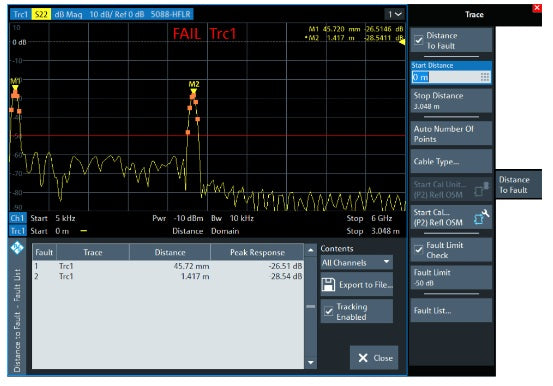

The distance-to-fault measurements option (R&S ZNL-K3) allows the detection of cable discontinuities, which is important for base station antenna installation, for example. Users can select from a range of common cable types with predefined velocity factor and frequency dependent attenuation, or create their own cable profiles.
Faults produce peaks on the impulse response (in the time domain) that is calculated from the measured reflection S-parameter trace via inverse Fourier transformation. The distance between the reference plane and the fault can then be calculated from the propagation time, accounting for the electrical properties of the transmission line. Moreover it is possible to define the peaks to be considered as being caused by a fault.
The following example shows the reflection at the end of a faultless open cable connected to test port 2. A full one-port calibration ensures that the distance is measured from the test port position (reference plane = distance zero). The horizontal position of marker "M2" corresponds to the cable length of 1417 mm, the additional peak at position "M1" is due to a bad connection between the cable and the test port.
*The image is for reference only. See product specifications for details.
Model No
ZNL-K3
Condition
New
Manufacturer
Rohde & Schwarz
Hey👋Let's start with your email